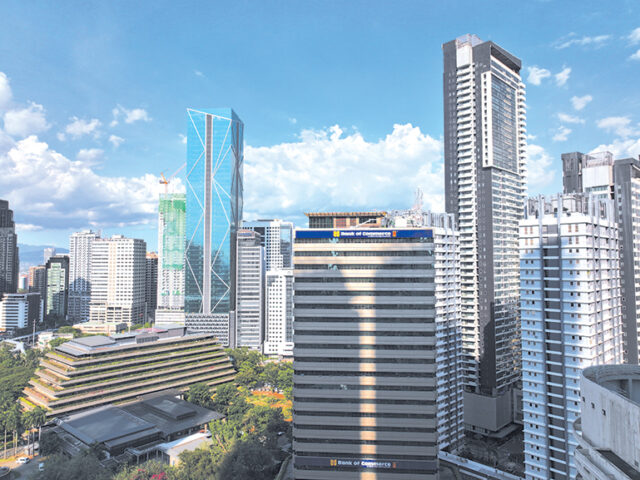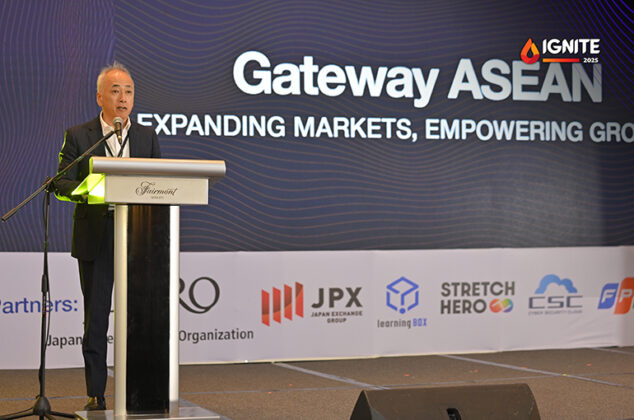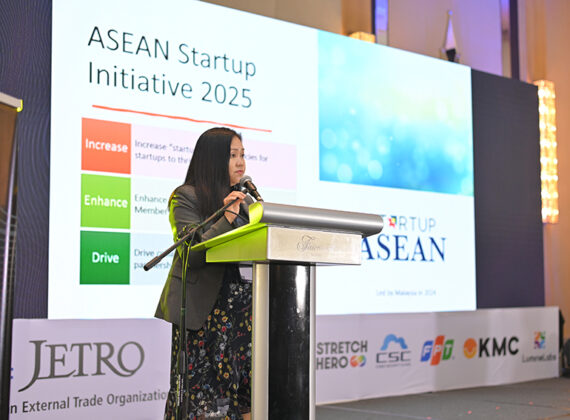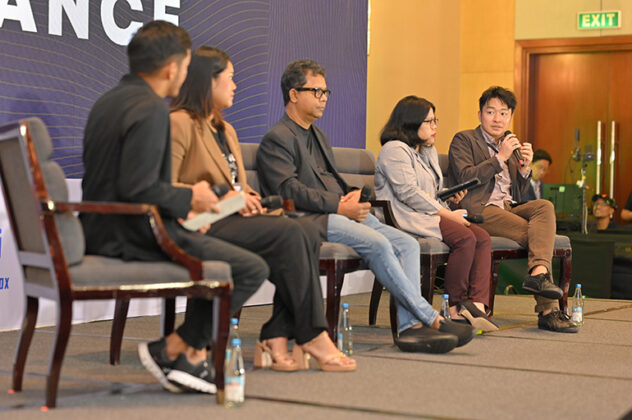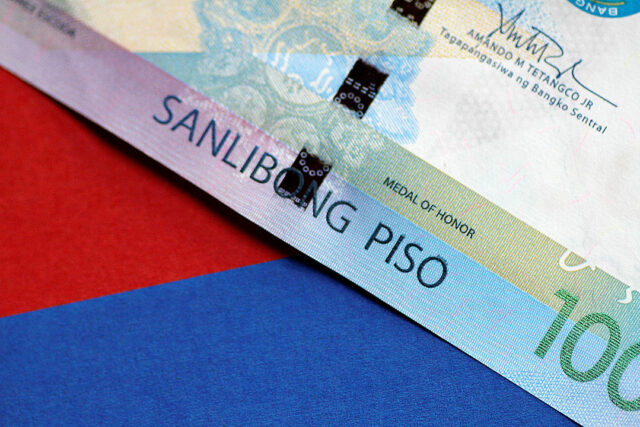Mouthwash may cure ‘the clap’
PARIS — In the 19th century, before the advent of antibiotics, Listerine mouthwash was marketed as a cure for gonorrhoea. More than 100 years later, researchers said Tuesday the claim may be true.
South Korea seeks to become 4th-largest global defense power, President Lee says
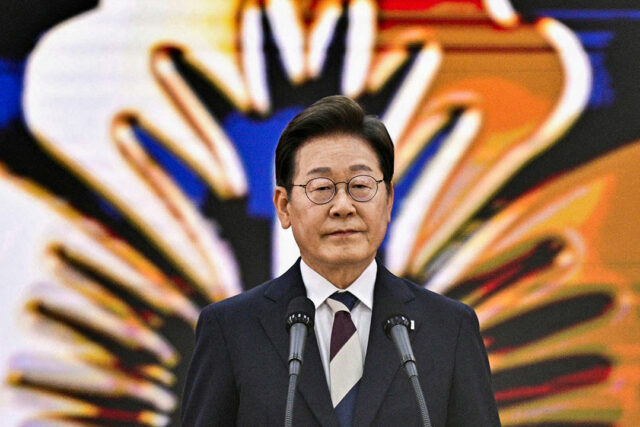
SEOUL — South Korean President Lee Jae Myung said on Monday the country will devote a “larger-than-expected budget” in defense and aerospace research until 2030 as it seeks to build the world’s fourth-largest defense industry.
Lee was speaking at South Korea’s largest-ever arms fair, the Seoul International Aerospace & Defense Exhibition (ADEX) 2025, where firms showed off new unmanned and artificial intelligence-enhanced weapons from howitzers to suicide drones in pursuit of more global defense sales.
South Korea ranked 10th in arms sales as of 2023, according to data from Stockholm International Peace Research Institute’s (SIPRI) top 100 arms companies data.
“Being one of the top four powerhouses in the defense industry is by no means an impossible dream,” Lee said.
“We will establish technological sovereignty by focusing investment on the development of technologies, parts, and materials that must be secured independently, such as special semiconductors in the defense sector.”
To its overseas defense partners, South Korea pledges to share not only its weapons systems but also “the technology and experience of building an industrial foundation”, Lee added.
Arms have become one of South Korea’s fastest-growing exports, especially since Russia’s invasion of Ukraine, inking multibillion-dollar deals selling everything from howitzers and ammunition to missiles and warships around the world.— Reuters
Fuelling growth, deepening ties
Standard Chartered Bank reinforces partnership with SMC Group as it facilitates BankCom’s P18-B bond
In February this year, Bank of Commerce (BankCom) listed its largest bond nearly four times its original target at P18 billion. An affiliate of the San Miguel Corporation (SMC) since 2008, BankCom has since reported a strong first-half performance, driven by its core business growth, strategic tech investments and expanding digital offerings.
“The successful bond issuance marks a pivotal milestone for the bank. This milestone is not just a financial achievement, but more importantly, it is the catalyst that launches our trajectory of future growth in focal areas, which our clients deem to matter most to achieving their success,” BankCom President and CEO (PCEO) Michelangelo R. Aguilar said in an interview with BusinessWorld.
Mr Aguilar noted that the bond issuance is an asset-liability exercise to match and manage long-term assets (i.e., consisting of term loans, mortgages, and auto loans) with long-term funds. While that may sound like the company’s fiduciary duty from the get-go, he said nothing about the transaction can be called routine.
“Given its size, which was achieved within the shortest selling period in our bond history, this issuance validates the strong vote of confidence from investors in BankCom’s financial strength, strategic direction, astute management, and future prospects,” Mr Aguilar said.
To facilitate the bond listing, Standard Chartered acted as Joint Lead Arranger, Joint Bookrunner, and Selling Agent for BankCom’s P18 billion dual-tranche 2-year and 5.25-year fixed-rate bonds.
“Standard Chartered assisted BankCom in being deal-ready to quickly seize conducive market conditions. BankCom’s offering is also the first public bond issuance in 2025, and they were able to reap the benefits of it, drawing on the robust onshore liquidity and demand for high-yielding investments,” Standard Chartered Bank Philippines CEO Mike Samson said in a separate interview.
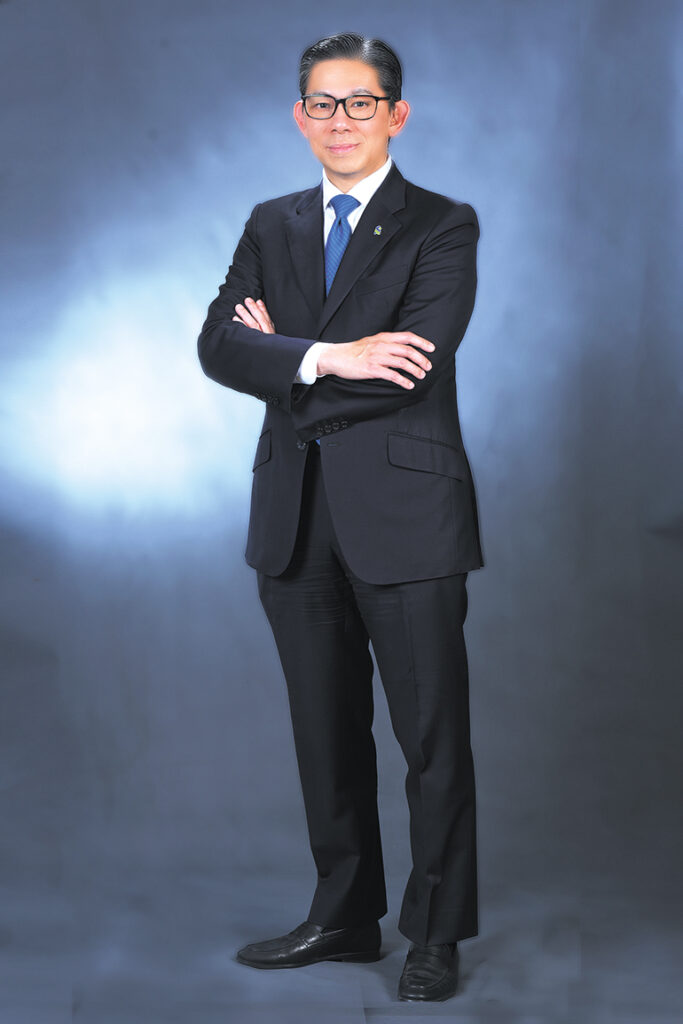
Mr Samson added that the transaction was structured as a dual-tranche offering, with BankCom issuing a 5.25-year tranche, to align with investor tenor preferences and take advantage of the regulatory landscape then that allowed for tax incentives to eligible Filipino individuals who hold long-term bank bonds. He said strong demand allowed BankCom to raise a record P18 billion, 3.6 times oversubscribed, while meeting its sizing and pricing goals and securing its tightest spreads to date.
Building on a trusted partnership, Mr Aguilar emphasised BankCom’s familiarity with Standard Chartered, which previously served as Sole Bookrunner and Joint Lead Arranger for its maiden P5.03 billion Long-Term Negotiable Certificates of Time Deposit (LTNCTDs) in March 2020, a deal completed despite the onset of the pandemic, and which once again played a key role in ensuring the smooth and successful execution of this latest bond offering.
“Standard Chartered’s global expertise, strong local presence, and deep understanding of fixed-income markets made them ideal partners for a successful transaction. The collaboration ensured a smooth and efficient execution of the bond offering,” he added.
Building growth backed by strengths
The issuance shows investor confidence in BankCom’s financial strength and strategy, while also positioning the bank to use the proceeds on growth initiatives.
“The proceeds from the largest bond issuance with the shortest selling period ever in BankCom history provides us a solid foundation for accelerated growth as it allows us to significantly bolster our ability to extend credit and expand our market share within the SMC ecosystem,” Mr Aguilar said.
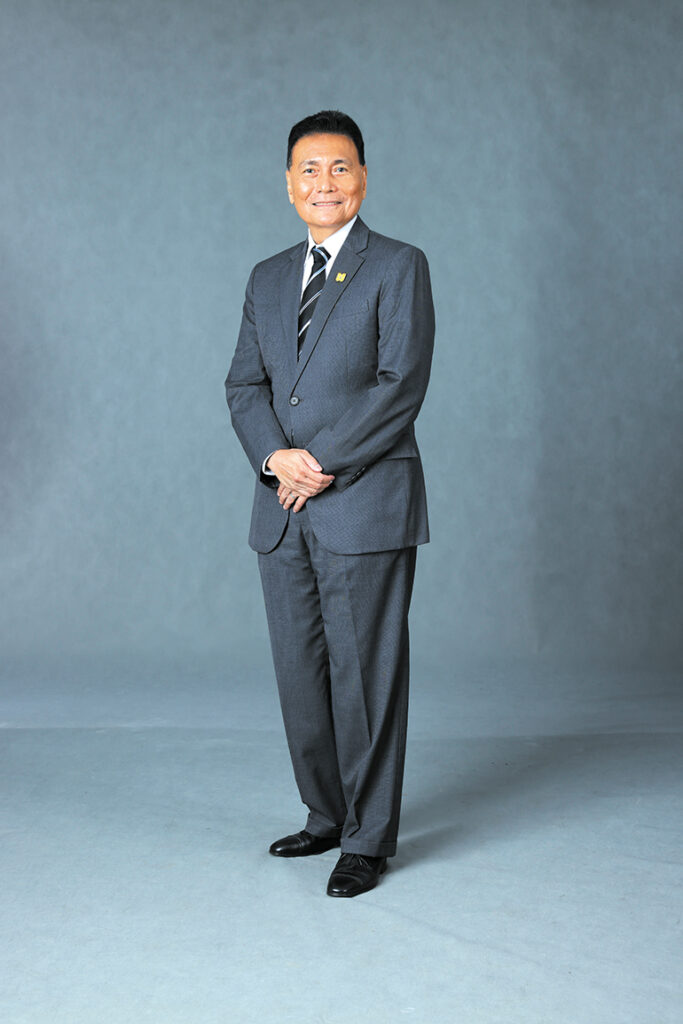
According to BankCom’s PCEO, the capital gained from the listing will scale the bank’s lending capacity through more competitive and accessible financing solutions offered to a wider range of clients. The listing is also expected to deepen the company’s relationship with the San Miguel Group, of which it has accessed 40% and continues to penetrate for deposit, cash management, or financing solutions.
“Our growth strategy significantly emphasises nurturing the San Miguel Group, comprised of its business units, subsidiaries, and affiliates. We recognise that SMC is one of the largest and most diversified conglomerates in the Philippines by revenues and total assets,” Mr Aguilar expounded.
As the main cash management bank of SMC, BankCom holds the operating account of SMC, making it a natural fit to do the same for the 4,000 small and medium enterprises, mid-sized suppliers, and distributors within the SMC ecosystem. This relationship allows BankCom to extend tailored loan and financing solutions, provide quicker access to capital, deliver financial literacy programmes, foster stronger client partnerships through dedicated relationship managers, and enhance services with innovative digital and technological tools.
“BankCom believes that supporting the broader population of local partners, suppliers and entrepreneurs is crucial for long-term success and sustainable growth through strengthening the value chain; supporting economic development and social impact through job creation; diversification and reduced risk by not only relying on a single client; and enhanced reputation and brand loyalty through its commitment to the wider community which leads to attracting new clients and talent,” Mr Aguilar said.
This landmark transaction strengthened BankCom’s ties within the San Miguel Group while also reinforcing Standard Chartered’s long-standing partnership with SMC.
“Standard Chartered has been a strong and long-time partner of San Miguel Corp. in its financing initiatives and as advisor for its various projects. This issuance further strengthened our relationship with the San Miguel Group, effectively supporting BankCom’s aspiration to be the Best Conglomerate Bank in the Philippines,” Mr Samson commented.
Improved performance
The strong capital raised from the listing has already translated into improved financial performance, with BankCom reporting robust earnings growth in the first half of the year. Compared to P1.42 billion in the first half of 2024, the bank posted an unaudited net income of P1.86 billion in 2025, a 31% surge. Similarly, net interest income reached P5.15 billion, 14% higher than P4.53 billion in the same period last year, while non-interest income at P912.52 million, P214.15 million higher than P698.37 million in the prior year.
“The robust performance was underpinned by sustained growth across core revenue streams, driven by net interest income, gains from trading securities, and foreign exchange transactions. Furthermore, the bank’s strategy of improving its revenue streams and prudent spending resulted in a lower cost-to-income ratio of 59%,” Mr Aguilar said.
BankCom has also undergone digital transformation through its partnership with Infosys Finacle to modernise and replace legacy core banking systems with a customer-focused infrastructure. Alongside this, the bank has introduced cash kiosks, upgraded its ATM network, and launched the Personal Online Banking QRPH, bringing its total network to 272 machines as of June. Complementing this digital push, BankCom is also innovating its physical presence with “Branch Lite Units” (BLUs), opening its first in Caticlan Airport and securing approvals for six locations with more expansions planned.
“These initiatives are part of BankCom’s IT investment programme and branch banking strategy, designed to provide customers with a secure and efficient banking experience, enabling them to manage their finances anytime and anywhere,” Mr Aguilar concluded.
Spotlight is BusinessWorld’s sponsored section that allows advertisers to amplify their brand and connect with BusinessWorld’s audience by publishing their stories on the BusinessWorld Web site. For more information, send an email to online@bworldonline.com.
Join us on Viber at https://bit.ly/3hv6bLA to get more updates and subscribe to BusinessWorld’s titles and get exclusive content through www.bworld-x.com.
ERC OKs higher FIT-All rate; power bills may rise in November
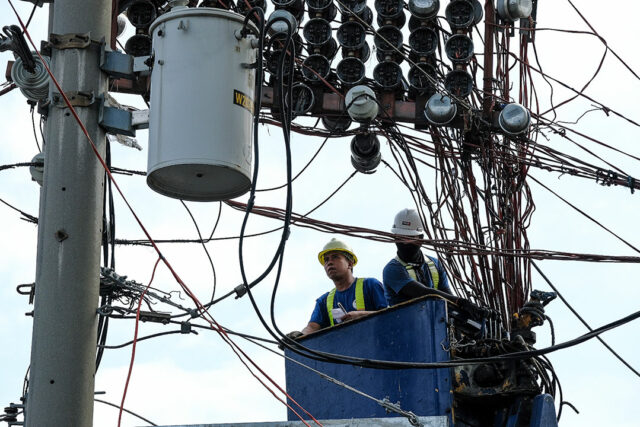
Power consumers may see higher electricity bills starting November as the Energy Regulatory Commission (ERC) approved a new feed-in tariff allowance (FIT-All) rate.
The regulator set the FIT-All at P0.2073 per kilowatt-hour (kWh), up from P0.1189 per kWh previously, it said in a statement on Monday.
The FIT-All is a uniform charge collected from all on-grid consumers to pay renewable energy developers. — Sheldeen Joy Talavera
Samsung opens submissions for Solve for Tomorrow 2025
Samsung Philippines has opened the call for entries for Solve for Tomorrow 2025, a nationwide innovation competition that encourages students to apply science and technology in addressing real-world community issues. The deadline for submissions is on Oct. 26.
Now in its 15th year globally, Solve for Tomorrow has engaged more than 2.8 million students across 68 countries and generated over 400,000 project ideas since its launch. The program aims to promote STEM-driven problem-solving and nurture the next generation of innovators.

The competition is open to students from Grades 8 to 10 enrolled in government-managed science high schools across the country. Participants are encouraged to form teams of up to four members, guided by one teacher adviser. Together, they must identify pressing issues within their communities and propose science and tech-driven solutions that address them.
Whether it’s championing environmental sustainability, driving social change through sports and technology, or tackling local challenges with the help of artificial intelligence, the goal is to create an innovation that makes an impact, not only on the country, but on the world.

The grand champion will receive P500,000 worth of Samsung devices for their school, along with P250,000 worth of gadgets for the team and adviser. They will also take home P100,000 in cash, with an additional P30,000 for the teacher adviser.
The second-place winners will receive P300,000 worth of Samsung devices for their school, P250,000 worth of gadgets for the team, P70,000 in cash for the members, and P25,000 for their adviser. Third-place winners will bring home P200,000 worth of Samsung devices for their school, P250,000 worth of gadgets for the team, P50,000 in cash for the members, and P15,000 for their adviser.
Each finalist team will be awarded P15,000 in cash, while their dedicated teacher advisers will receive P5,000 each.
Interested participants can learn more about the program by visiting www.samsung.com/ph/solve-for-tomorrow or following Samsung Philippines on social media via Facebook (facebook.com/SamsungPH), X (x.com/SamsungPH), and Instagram (instagram.com/samsungph).
SparkUp is BusinessWorld’s multimedia brand created to inform, inspire, and empower the Philippine startups; micro, small and medium enterprises (MSMEs); and future business leaders. This section will be published every other Monday. For pitches and releases about startups, e-mail to bmbeltran@bworldonline.com (cc: abconoza@bworldonline.com). Materials sent become BW property.
Israel says ceasefire and aid to resume after airstrikes kill 26 in Gaza

JERUSALEM/CAIRO/ABOARD AIR FORCE ONE — The Israeli military said on Sunday a ceasefire in Gaza had resumed after an attack killed two of its soldiers and prompted a wave of airstrikes that Palestinians said killed 26 people, in the most serious test yet of this month’s US-brokered truce.
US President Donald Trump said the ceasefire he brokered was still in place. US officials, Trump said, believe Hamas leadership may not be involved in the violations, which will be “handled toughly, but properly.”
Speaking to reporters aboard Air Force One, he said he did not know whether the Israeli strikes were justified. “I’d have to get back to you on that,” Trump said.
Aid into Gaza was set to resume on Monday following US pressure, an Israeli security source said, shortly after Israel announced a halt in supplies in response to what it said was a “blatant” violation by Hamas of the truce.
The Israeli military said it struck Hamas targets across the enclave, including field commanders, gunmen, a tunnel and weapons depots, after militants launched an anti-tank missile and fired on its troops, killing the soldiers.
The strikes killed at least 26 people, including at least one woman and one child, according to local residents and health authorities. At least one strike hit a former school sheltering displaced people in the area of Nuseirat, residents said.
“We’re going to have to see what’s happening. We want to make sure that it’s going to be very peaceful with Hamas,” Trump said.
Hamas members acting independently of the organization’s leaders may be responsible for antagonizing the Israelis, Trump said.
“They’ve been quite rambunctious, and they’ve been doing some shooting, and we think maybe the leadership isn’t involved, and then, you know, some rebels within, but either way it’s going to be handled properly,” he said.
Trump’s envoy Steve Witkoff and son-in-law Jared Kushner were expected to travel to Israel on Monday, an Israeli official and a US official said.
The armed wing of Hamas said it remained committed to the ceasefire agreement, was unaware of clashes in Rafah, and had not been in contact with groups there since March.
US Vice President JD Vance did not mention the Israeli strikes when speaking to reporters, but said there were about 40 different cells of Hamas and no security infrastructure yet in place to confirm their disarmament.
“Some of those cells will probably honor the ceasefire. Many of those cells, as we saw some evidence of today, will not,” he said.
“Before we actually can ensure that Hamas is properly disarmed, that’s going to require … some of these Gulf Arab states, to get forces in there, to actually apply some law and order and security keeping on the ground.”
Israeli Prime Minister Benjamin Netanyahu said he had ordered the military to respond forcefully to what he described as Hamas’ violations of the ceasefire.
PATH TO PEACE IS UNCERTAIN
Fearing the truce may collapse, some Palestinians rushed to buy goods from a main market in Nuseirat and families fled their homes in Khan Younis further south, after airstrikes hit nearby.
The strikes were reminiscent of Israel’s response to what it viewed as serious violations of its ceasefire with Hamas’ Lebanese ally Hezbollah in late 2024, less than a week after it came into effect and after days of mutual accusations of truce breaches, though that ceasefire has since largely held.
But formidable obstacles remain in the way of a durable peace in Gaza, where a ceasefire collapsed in March after nearly two months of relative calm when Israel unleashed a barrage of airstrikes.
DISPUTE OVER BODIES OF DECEASED HOSTAGES
The new ceasefire took effect on October 10, halting two years of war, but the Israeli government and Hamas have been accusing each other of violations of the ceasefire for days.
Israeli Defense Minister Israel Katz said the “yellow line” to where Israeli forces had pulled back under the ceasefire deal would be physically marked and that any violation of the ceasefire or attempt to cross the line would be met with fire.
Hamas detailed what it said was a series of violations by Israel that it says have left 46 people dead and stopped essential supplies from reaching the enclave.
On Saturday, Israel said the Rafah border crossing between Gaza and Egypt, which had been expected to be reopened this week, would remain closed and that its reopening would depend on Hamas fulfilling its obligations under the ceasefire.
Israel says Hamas is being too slow in handing over bodies of deceased hostages. Hamas last week released all 20 living hostages it had been holding and in the following days has handed over 12 of the 28 deceased captives.
MORE AID IS NEEDED
The group says it has no interest in keeping the bodies of remaining hostages and that special equipment is needed to recover corpses buried under rubble.
The Rafah crossing has largely been shut since May 2024. The ceasefire deal also includes the ramping up of aid to Gaza, where hundreds of thousands of people were determined in August to be affected by famine, according to the IPC global hunger monitor.
The crossing has in previous ceasefires functioned as a key conduit for humanitarian aid to flow into the enclave.
Although the flow of aid through another crossing had, until Sunday’s decision to halt aid, increased significantly since the ceasefire began, the United Nations says far more is needed.
Key questions of Hamas disarming, future governance of Gaza, the make-up of an international “stabilization force”, and moves towards creation of a Palestinian state have yet to be resolved. — Reuters
IGNITE 2025 lights up ASEAN’s innovation scene
Previously recognized for bridging startups and investors across Asia, IGNITE has once again taken center stage, this time, for its transformative 2025 edition that brought together the brightest minds in innovation under one roof.
Held on Oct. 15, 2025, at Fairmont Makati, IGNITE 2025 carried the theme “Gateway ASEAN: Expanding Markets, Empowering Growth.” The one-day conference turned the venue into a powerhouse of ideas and collaboration, uniting startups, investors, and industry leaders from across the region to spark meaningful partnerships and expand cross-border opportunities. The conference opened with an exclusive welcome dinner at the heart of Makati City, an intimate gathering where global guests, sponsors, and investors exchange ideas over shared aspirations and conversation, a fitting prologue to a day of purposeful dialogue.
 The following morning, the event came alive with opening remarks from key figures shaping regional innovation: Executive Director Kazuo Nakamura of Japan External Trade Organization (JETRO) Manila; Director III Jhino Illano of the DICT–ICT Industry Development Bureau; and Chief Technology Transfer Officer Russel Pili of DoST–PCIEERD. Their messages set the stage for a day of insight and action, grounded in shared commitment to ASEAN’s digital and innovation-driven growth.
The following morning, the event came alive with opening remarks from key figures shaping regional innovation: Executive Director Kazuo Nakamura of Japan External Trade Organization (JETRO) Manila; Director III Jhino Illano of the DICT–ICT Industry Development Bureau; and Chief Technology Transfer Officer Russel Pili of DoST–PCIEERD. Their messages set the stage for a day of insight and action, grounded in shared commitment to ASEAN’s digital and innovation-driven growth.
The momentum continued with powerful keynotes, panel discussions, and breakout sessions led by global innovators and business leaders, covering AI-powered leadership, AI trends in ASEAN, and a preview of the ASEAN Summit PH 2025. Across sessions, conversations centered on emerging trends, market access, and the future of ASEAN’s innovation economy, offering fresh insights for entrepreneurs and corporations looking to scale regionally.
A highlight of the day was the JETRO Co-Innovation Pitch Session, an innovation challenge that brought together one Japanese corporation — Enebloom — and four rising Filipino startups: Better-ed, Klimatech, Hotelblock.ai, and Alerto. This cross-border pitch session showcased how Japanese and Philippine innovators can co-create solutions that address shared challenges and unlock new market opportunities.
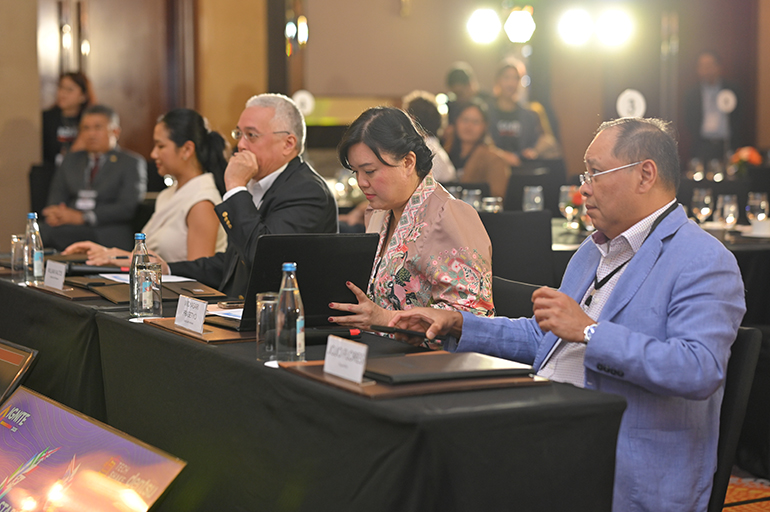
Meanwhile, the Startup World Cup Philippines Regional Final concluded with Edge Tutor International Pte. Ltd. emerging as the national champion, earning the opportunity to represent the Philippines at the Grand Finale in Silicon Valley in 2026 — a milestone that highlights the country’s rising visibility in the global startup ecosystem. Rounding out the top three were Xeleqt Technology Innovations Inc. in second place and Avilta in third, both delivering strong pitches that impressed the panel of judges and reinforced the depth of talent in the Philippine innovation landscape.
Throughout the day, booth exhibitions showcased cutting-edge technologies and new business solutions. The event wrapped up with a by-invitation networking dinner, where connections turned into potential collaborations — an embodiment of IGNITE’s mission to build bridges across the ASEAN startup ecosystem.
Since its launch in 2017 by TechShake and dentsu, IGNITE has grown from a 500-participant gathering into one of the Philippines’ foremostinternational innovation conferences, drawing thousands from Japan, South Korea, Taiwan, and the ASEAN region.
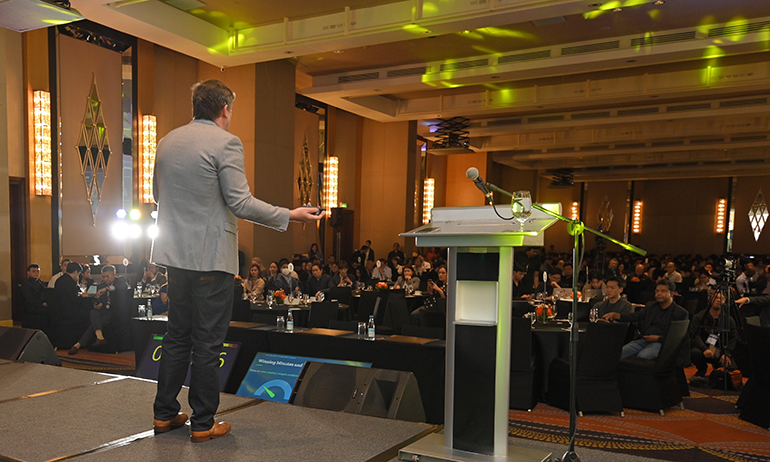 This year’s IGNITE 2025: Gateway ASEAN: Expanding Markets, Empowering Growth brought together over 1,000 participants, including investors, startups, and corporate innovators, supported by more than 70 community partners and a broad network of media partners such as Philippine Primer, When in Manila, Fintech News PH, and BusinessWorld.
This year’s IGNITE 2025: Gateway ASEAN: Expanding Markets, Empowering Growth brought together over 1,000 participants, including investors, startups, and corporate innovators, supported by more than 70 community partners and a broad network of media partners such as Philippine Primer, When in Manila, Fintech News PH, and BusinessWorld.
And as Gateway ASEAN opened its doors this year, it did more than showcase technology and talent. It reminded the region of its shared potential, that when markets expand, growth is empowered, and the region moves forward, together.
Spotlight is BusinessWorld’s sponsored section that allows advertisers to amplify their brand and connect with BusinessWorld’s audience by publishing their stories on the BusinessWorld Web site. For more information, send an email to online@bworldonline.com.
Join us on Viber at https://bit.ly/3hv6bLA to get more updates and subscribe to BusinessWorld’s titles and get exclusive content through www.bworld-x.com.
Belarus security chief seeks dialogue with Ukraine

The head of Belarus’s security agency said his institution was trying to build contacts with Ukraine to help achieve a settlement of its more than 3-1/2-year-old war with Russia, the country’s state news agency reported on Sunday.
Ivan Tertel’s comments to state television followed reports last week that a senior Belarusian diplomat had held meetings with Europeans to try to ease the isolation long imposed on his country, a close ally of Russian President Vladimir Putin.
Tertel, whose remarks were reported by the Belta news agency, said meetings with Ukrainian officials were vital “in the current situation in order to come up with a consensus”.
“This work is also going on. Of course, a lot here depends on the Ukrainian side. Our president is working as much as he can to stabilize the situation in the region,” said Tertel, whose agency still uses its Soviet-era acronym KGB.
“And we have found a balance of the two sides’ interests in this very complicated situation with a tendency towards tension. I am convinced that we can eliminate this situation only through quiet talks and the search for compromise.”
Belarusian President Alexander Lukashenko allowed the Kremlin to use his country’s territory to launch part of the 2022 war with Ukraine, but has kept his armed forces out of the conflict.
Lukashenko, in power since 1994, has long been shunned by the West on grounds of human rights violations. Punitive measures intensified after security forces crushed rallies by protesters accusing the president of rigging his 2020 re-election and again because of his support for the invasion.
But US President Donald Trump has appealed to Lukashenko in recent months, calling him a “highly respected leader” and sending an envoy to Minsk, which led to the release of more than 50 political prisoners.
Belarusian media quoted Lukashenko last month as saying that he wanted to speak to Ukrainian President Volodymyr Zelenskiy to help facilitate a settlement of the war.— Reuters
Thieves rob priceless jewels from Paris’ Louvre in brazen heist
PARIS — Thieves in balaclavas broke into Paris’ Louvre museum on Sunday, using a crane to smash an upstairs window, then stealing priceless objects from an area that houses the French crown jewels before escaping on motorbikes, officials said.
The robbery raises awkward questions about security at the museum, where officials had already sounded the alarm about lack of investment at a world-famous site, home to artworks such as the Mona Lisa, that welcomed 8.7 million visitors in 2024.
“The theft committed at the Louvre is an attack on a heritage that we cherish because it is our History,” President Emmanuel Macron said on X. “We will recover the works, and the perpetrators will be brought to justice.”
ROBBERY WAS ‘VERY PROFESSIONAL’ WITH NO VIOLENCE
The thieves struck at about 9.30 a.m. (0730 GMT) when the museum had already opened its doors to the public, and entered the Galerie d’Apollon building, Paris Prosecutor Laure Beccuau said on BFM TV.
The robbery took between six to seven minutes and was carried out by four people who were unarmed, but who threatened the guards with angle grinders, she said.
A total of nine objects were targeted by the criminals, and eight were actually stolen. The thieves lost the ninth one, the crown of Napoleon III’s wife, Empress Eugenie, during their escape, Beccuau said.
“It’s worth several tens of millions of euros – just this crown. And it’s not, in my opinion, the most important item,” Drouot auction house President Alexandre Giquello told Reuters.
Beccuau said it was a mystery why the thieves did not steal the Regent diamond, which is housed in the Galerie d’Apollon and is estimated to be worth more than $60 million by Sotheby’s.
“I don’t have an explanation,” she said. “It’ll only be when they’re in custody and face investigators that we’ll know what type of order they had and why they didn’t target that window.”
Beccuau said one of the thieves was wearing a yellow reflective vest, which investigators have since recovered. She added that the robbers tried and failed to set fire to the crane, mounted on the back of a small truck, as they fled.
PROBE UNDERWAY BY SPECIALIST UNIT
Interior Minister Laurent Nunez said the probe had been entrusted to a specialized police unit that has a high success rate in cracking high-profile robberies.
Investigators were keeping all leads open, Beccuau said.
But she said it was likely the robbery was either commissioned by a collector, in which case there was a chance of recovering the pieces in a good state, or undertaken by thieves interested only in the valuable jewels and precious metals. She said foreign interference was not among the main hypotheses.
“We’re looking at the hypothesis of organized crime,” she said, adding that it could be thieves working on spec for a buyer, or seeking to get access to jewels that can be useful to launder criminal proceeds.
“Nowadays, anything can be linked to drug trafficking, given the significant sums of money obtained from drug trafficking.”
QUESTIONS ON SECURITY
The Louvre, the world’s most-visited museum, said on X it would remain closed for the day for “exceptional reasons”.
Joan and Jim Carpenter, from Santa Cruz, California, said they had been moved out of a gallery just as they were about to see the Mona Lisa.
“Well, when you rob the Louvre, that’s a big deal to all of France, so I knew something was up because of the way they swept the whole museum,” Joan Carpenter said.
The Mona Lisa was stolen from the museum in 1911 in one of the most daring art thefts in history, in a heist involving a former employee. He was eventually caught and the painting was returned to the museum two years later.
Earlier this year, officials at the Louvre requested urgent help from the French government to restore and renovate the museum’s ageing exhibition halls and better protect its countless works of art.
Macron, writing on X, said that a new government plan for the Louvre announced in January “provides for strengthened security.”
Culture Minister Rachida Dati said the issue of museum security was not new.
“For 40 years, there was little focus on securing these major museums, and two years ago, the president of the Louvre requested a security audit from the police prefect. Why? Because museums must adapt to new forms of crime,” she said. “Today, it’s organized crime – professionals.” — Reuters
Ortigas Connect eyes role as growth ecosystem for Metro Manila entrepreneurs
Ortigas Connect: ELEVAT10N, hosted by BNI Abundance — Ortigas Chapter, will gather Metro Manila founders and executives on Oct. 24, from 6:30 a.m. to 8:30 a.m., at Edsa Shangri-La Manila to experience the chapter’s trust-based referral system, which has already generated P104 million in business this year.
ELEVAT10N is the latest edition of the chapter’s signature “Ortigas Connect” series — this time designed for CEOs, business owners, executives and startup founders who are ready to scale and want to grow through referrals, trust, and collaboration instead of cold outreach.
At the center of this year’s event is Coach Edwin Soriano, newly inducted Chapter President and Philippine Country Representative of Quality Mind Global.
“I see this as an opportunity to raise the bar — not just for the chapter, but for every entrepreneur who walks into that room,” said Mr. Soriano. “I lead my own growth as a person and in my business. With much help from others, I’d love to bring others along this journey. I’d love to be brought along with others’ journeys. That’s what Elevat10n is all about: growing together.”
From January 2025 to today, BNI Abundance — Ortigas has recorded 12,210 referrals and generated P104 million in closed business among its members and referral partners. The event aims to open that success system to a wider circle of entrepreneurs ready to take the next step.
Guests at Ortigas Connect: ELEVAT10N will experience how a structured referral system works in real time. The program also includes learning sessions about the Core Value of Givers Gain, as well as business strategies on how to grow, expand and elevate.
Each participant will also have 45 seconds to introduce their business and the type of clients or partners they’re looking for — essentially a spotlight moment in front of more than 70 potential referral partners. There will also be time for casual conversations over breakfast and coffee.
Freelancers and students are also welcome, though the program focuses on growing enterprises.
The fee for the event is P2,500. The event can only accommodate 70 seats.
Register at https://eventsize.com/event/1760014306975-ortigas-connect-elevat10n. Slots are confirmed upon payment. Attendees are encouraged to bring business cards and prepare their 45-second introduction.
SparkUp is BusinessWorld’s multimedia brand created to inform, inspire, and empower the Philippine startups; micro, small and medium enterprises (MSMEs); and future business leaders. This section will be published every other Monday. For pitches and releases about startups, e-mail to bmbeltran@bworldonline.com (cc: abconoza@bworldonline.com). Materials sent become BW property.
Condo glut weighs on home prices
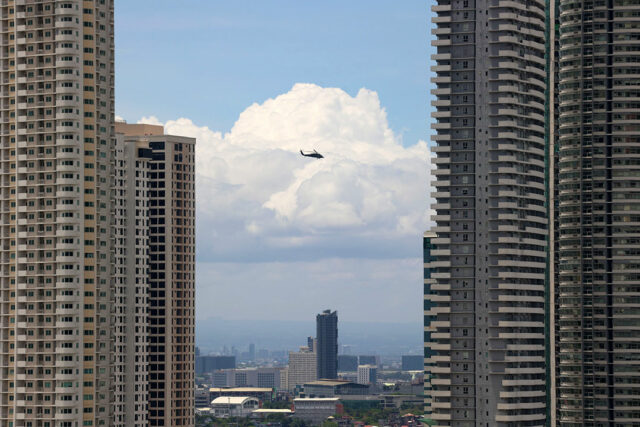
By Katherine K. Chan
SLUGGISH DEMAND and oversupply of condominium units in the market have dampened the growth in prices of residential properties in the National Capital Region (NCR), analysts said, which could persist until yearend as the glut remains.
Joey Roi H. Bondoc, director and head of research at Colliers Philippines, said weak demand for condominium units in the middle-income segment led to the slow growth of housing prices in NCR.
“I think we will attribute that to (the) slower take-up of unsold condominium units in the secondary, ready-for-occupancy (RFO) market,” he told BusinessWorld in a phone interview.
He said about 31,000 condominium units remain unsold in the RFO market, with nearly 60% under the mid-income segment or those worth P3.6 million to P12 million per unit.
Home prices in Metro Manila posted a slower growth of 2.4% in the second quarter from 13.9% in the January-March period and 9.3% in the same quarter last year, the Bangko Sentral ng Pilipinas’ (BSP) Residential Property Price Index (RPPI) showed.
Quarter on quarter, NCR housing prices contracted by 3.6%.
Condominium unit prices also dipped by 0.2%, a reversal from the 11.5% increase a year prior and the 10.6% growth last quarter.
Roy Amado L. Golez, Jr., director for research and consultancy at Leechiu Property Consultants, said buyers’ sentiment and preferences also affected the growth of condominium prices during the period.
“The slowdown in year-on-year growth in condominium prices in NCR from Q1 2025 (13.9%) to Q2 2025 (2.4%) can be attributed to the oversupply, cautious buyer sentiment, and possible shift in buyer preferences,” he told BusinessWorld in an e-mail. “Buyers are responding with a more critical examination of their needs before making any property purchases. There are less instances of speculative purchases in the market today for NCR.”
Mr. Golez said secondary or pre-owned units sold at lower prices are also cornering some of the demand for housing.
“Note that the RPPI doesn’t cover only primary units from developers — secondary units are competing for demand, and motivated sellers sell at a discount so they can liquidate their properties,” he said.
“With the low-yield environment, some owners are finding it more attractive to flip their condominium investments and divert to alternative instruments. This can also include sales of condominium units at discounted prices that developers are offering to move their unsold inventory.”
He added that developers’ project launches in Metro Manila have slowed as they still have existing inventory.
Claro dG. Cordero, Jr., director for Research, Consulting & Advisory Services at Cushman and Wakefield, said the past quarters’ strong performances could have amplified the price growth slowdown, adding that the 13.9% growth in the first quarter was “somewhat difficult to match.”
“That doesn’t mean though that the decline was very sharp,” he added.
Mr. Cordero also linked the oversupply of condominium units to the ban on Philippine offshore gaming operators (POGOs), whose workers previously resided in such properties.
“(A) lot of the excess inventory is due to the fact that the units were vacated by POGOs… So, since the POGOs left late last year, a lot of them were brought back to the market,” he said.
Meanwhile, expensive financing and high mortgage rates are also affecting demand for condominium units in the rental market, Mr. Bondoc said.
He said the mortgage rate for a five-year term ranges from 7.7% to 7.8% and would cost more if longer than five years.
“So, the rental market is experiencing sluggishness at this point… meaning if I buy a condominium unit (and) once it’s turned over, will I be able to rent it out to a BPO employee or a foreign employee?” Mr. Bondoc said.
“Unfortunately, the rental market is slowing in Metro Manila right now because again (there are) a lot of unsold condominium units (and) owners are imposing lower rental rates,” he added.
BSP data showed that the median price for all housing types in the Philippines stood at P3.4 million in the second quarter. Condominium units had a median price of P3.8 million, while houses cost around P3.1 million.
Houses in the NCR were the most expensive at a median price of P7.01 million, while houses in other areas in the Philippines were the cheapest at about P2.7 million.
SLOW TAKE-UP TO PERSIST
Mr. Golez said condominium sales have improved as of the third quarter amid lower interest rates.
“Now… we’re seeing renewed buyer activity in the (Metro Manila) condominium market,” he said. “Lower interest rates may be fueling this rise in demand, as well as discounts and promos from developers.”
The central bank’s policy rate currently stands at 4.75%, the lowest in over three years. It has lowered benchmark interest rates by 175 basis points since kicking off its easing cycle in August 2024, and BSP Governor Eli M. Remolona, Jr. has left the door open to more cuts in the coming months to help boost domestic demand due to a softer economic outlook as a widening corruption scandal involving government infrastructure projects has affected business sentiment.
However, condominium price growth, particularly for secondary units, in NCR will likely remain flat but could recover in the medium term once supply levels become more manageable and rental yields improve, Mr. Golez said.
“The pace of recovery will depend on how quickly developers clear unsold stock, whether buyer sentiment improves, and when rental demand picks up. Until then, we can expect subdued price growth.”
Mr. Bondoc said tepid demand for condominium units in Metro Manila will likely persist until yearend as the number of unsold units remains significant. However, developers’ RFO promos and discounts could help attract buyers.
“We saw that there was an improvement in take-up of condominiums in (the) second quarter this year because of promos and discounts offered by developers. But let’s see if that will be sustained. But in terms of rental prospects and appetite for condominium units for rent, we’re likely to see slower demand for the remainder of 2025,” he added.
He said the “strong” demand seen for residential properties outside Metro Manila is making up for the slowdown seen in the capital.
“I think what’s offsetting that is still a strong take-up outside of Metro Manila. So, that has been offsetting the lukewarm appetite for condominium units in the capital region at this point. That’s still a positive for the market that we’re seeing.”
“Buyer interest is increasing for housing options outside NCR, especially for landed housing. Developers are responding in kind by continuing to develop townships outside NCR, capitalizing on infrastructure improvements and lifestyle appeal,” Mr. Golez added.
In areas outside NCR, home prices rose by 11.5% in the second quarter, faster than the 3% growth logged in the first quarter and 7.2% the previous year, BSP data showed.
Mr. Cordero said they see home prices rising in the near term, particularly in the pinch areas in emerging regions such as Cebu.
“That’s driven by sustained demand for larger living spaces and more horizontal developments as well as regional migration and infrastructural enhancements.”
ECCP outlines policy recommendations to help boost investments
THE EUROPEAN Chamber of Commerce of the Philippines (ECCP) has identified its advocacy recommendations across 12 key sectors that will help create a business environment that fosters investment, innovation, and sustainable growth.
“This year’s Advocacy Papers capture the perspectives of our committees, reflecting the expertise and dedication of ECCP members across a wide range of industries,” ECCP President Paulo Duarte said in a statement.
He said recent reforms in the country, including the passage of the Corporate Recovery and Tax Incentives for Enterprises to Maximize Opportunities for Reinvigorating the Economy (CREATE MORE) Act, have been encouraging.
“Further progress in improving the ease of doing business and ensuring a level playing field for both local and foreign enterprises will be vital to unlocking the Philippines’ full potential as an investment destination,” he added.
This year’s Advocacy Papers span 12 sectors, which are agriculture, automotive, aviation, customs and logistics, environment and water, food and beverage, healthcare, human capital and education, infrastructure, renewable energy, tax and financial services, and tourism.
Under agriculture, the ECCP recommended the passage of the Animal Industry Development and Competitiveness Act to address the challenges in productivity, resilience, and market access of the Philippines’ animal sector value chains.
“The proposed law creates a unified institutional and fiscal framework, including the design of a multi-year competitiveness fund and clearer mandates for implementing agencies,” the group said.
This framework is expected to “enable sustained investments in feed and genetics, slaughter and cold-chain infrastructure, and disease-control capacity rather than the ad hoc, year-to-year programming typical under the current architecture.”
The group also recommended scaling value-chain investments around prioritized commodity roadmaps, accelerating climate-resilient cold-chain and aggregation infrastructure dispersal, institutionalizing data-driven agricultural insurance, and dedicating funding for biosecurity.
It also called for the harmonization of veterinary product regulation, integration of market access and sanitary and phytosanitary compliance for public agricultural investments, expanded financing for smallholder farmers, and the accelerated enactment of the National Land Use Act.
For the automotive sector, the ECCP asked for the elimination of import duties for European automotive brands, streamlined border procedures and certification, predictability of incentives and regulatory frameworks, and development of a support program for electric vehicle (EV) adoption.
It also called for the inclusion of road safety education into the basic education curriculum, requiring regular calibration and testing for critical electronics in EVs, and safety laws related to child car seats, dash cams, and dark car tints.
For aviation, the chamber sought more investments in the modernization of transport infrastructure and aviation safety oversight, improvements in the frameworks regulating the air transport sector, and the ratification of the Cape Town Agreement.
The groups asked for an incentive framework for competitive and sustainable aviation, strengthening human capital for the aviation sector, and integration of sustainability in the Philippine Aviation Strategy.
In logistics, the group asked for the promotion of ease of doing business, including operationalization of the National Single Window, enforcement and update of Citizen’s Charters, and establishment of guidelines to regulate charges imposed by international shipping lines.
The ECCP also recommended the amendments to the Philippine Ports Authority Charter and the passage of the Blue Economy Act and the Maritime Trade Competitiveness Act.
In the area of environment, the group asked for the implementation of the Extended Producers’ Responsibility (EPR) Scheme, incentive-based measures under EPR law, and the integration of environmental education in the curriculum.
Under food and beverage, the group is seeking the proper implementation of front-of-package labeling, implementation of policies regarding marketing to kids, education efforts that recognize benefits of prepackaged food, review of food taxes, and promotion of ease of doing business.
In healthcare, the group is asking for the expansion of Philippine Health Insurance Corp.’s coverage and the proper implementation of the New Government Procurement Act.
Meanwhile, ECCP is seeking enhanced curriculum for the basic education system, enhanced training programs for teachers, accelerated facility provisioning, strengthened vocational programs, enhanced support programs for private schools, and improved nutrition programs.
The group is also recommending revisions to the apprenticeship law, eased restrictions on the employment of foreign nationals, passage of the Enterprise Productivity Act, and reconsideration of across-the-board wage mandates.
In the area of infrastructure, the group is pushing for funds allocation for green infrastructure and faster blended cement adoption, implementation of the Mandanas-Garcia ruling, ensuring sanctity of public-private partnership contracts, and a level playing field for local and foreign-owned contractors.
The group is also seeking effective implementation of the Konektadong Pinoy Act, accelerated digital infrastructure development, development of a future-ready workforce, improvements in ease of doing business and cyber-resilience, and integration of regional development into the national information and communications technology strategy.
It also asked for improved ease of doing business and green financing mechanisms, effective implementation of the Energy Efficiency and Conservation Act, and the establishment of a policy framework for waste-to-energy technologies.
The group is also asking the government to digitalize and streamline tax processes, accelerate e-invoicing, resolve ambiguity in cross-border taxation, standardize tax assessment and valuations, establish a carbon credits facility, and strengthen tax awareness.
For tourism, ECCP recommended improvements to international and domestic connectivity, promotion of domestic and international tourism, restructuring of the Civil Aviation Authority of the Philippines, and integration of sustainability in a long-term tourism strategy.
The group also expressed support in the establishment of an independent agency focused on the development of Philippine airports through the Philippine Airports Authority and the creation of a Philippine Transportation Safety Board. — Justine Irish D. Tabile
PHL banks’ assets expand to P27.7 trillion as of August
THE PHILIPPINE banking sector’s total assets grew by 6.7% year on year as of end-August amid continued growth in loans and deposits.
Banks’ combined assets rose to P27.729 trillion as of August from P25.988 trillion a year prior, data from the Bangko Sentral ng Pilipinas (BSP) showed.
Meanwhile, month on month, this was 0.04% lower than the P27.742 trillion recorded at end-July.
Banks’ assets are mainly supported by deposits, loans, and investments. These include cash and due from banks as well as interbank loans receivable (IBL) and reverse repurchase (RRP) net of allowances for credit losses.
Universal and commercial banks still held the bulk of the Philippine banking system’s assets with P25.9 trillion as of August. Thrift banks followed with P1.3 trillion, rural and cooperative banks held P385.45 billion, while digital banks had P141.77 billion in assets.
Broken down, the banking sector’s total net loan portfolio, inclusive of IBL and RRP, expanded by 9.9% year on year to P15.189 trillion at end-August from P13.816 trillion a year ago. Month on month, it slipped by 0.5% from P15.259 trillion.
Banks’ net investments, or financial assets and equity investments in subsidiaries, stood at P8.167 trillion in the period, rising by 10.3% from P7.407 trillion a year prior but down by 0.9% from P8.242 trillion at end-July.
Meanwhile, net real and other properties acquired jumped by 17.9% to P130.938 billion from P111.029 billion in the same period last year. This was also up 0.9% from P129.735 billion a month prior.
Banks’ other assets likewise rose by 11.2% to P2.23 trillion as of August from P2.005 trillion a year prior. Month on month, it climbed by 1.9% from P2.187 trillion.
However, cash and due from banks slumped by 24% year on year to P2.012 trillion from P2.648 trillion. Meanwhile, this was up by 4.6% from P1.923 trillion a month prior.
BSP data also showed that the total liabilities of the banking system stood at P24.169 trillion as of August, rising by 6.3% from P22.73 trillion in the comparable year-ago period but down 0.2% from the P24.22 trillion seen at end- July.
This came as deposit liabilities climbed by 6.9% year on year to P20.454 trillion from P19.142 trillion.
Broken down, peso-denominated deposits stood at P16.811 trillion, while foreign currency deposits were at P3.643 trillion.
Philippine banks’ assets continued to grow amid the BSP’s easing cycle and cuts in their reserve requirement ratios (RRR), as these helped boost demand for credit and increase their loanable funds, Rizal Commercial Banking Corp. Chief Economist Michael L. Ricafort said in a Viber message.
“Faster loan growth has been the largest contributor to the continued growth in banks’ total assets,” he said. “Continued growth in bank deposits also allowed banks to increase loans and other investments, thereby leading to the continued growth in banks’ total assets.”
In August, bank lending expanded by 11.2% year on year to P13.62 trillion, the slowest growth seen in nine months. The Monetary Board this month trimmed benchmark interest rates by 25 basis points (bps) for a fourth consecutive meeting, bringing the policy rate to an over three-year low of 4.75%.
It has now slashed borrowing costs by a cumulative 175 bps since it began its rate cut cycle in August 2024. BSP Governor Eli M. Remolona, Jr. has said that more cuts are possible as they want to support the economy amid weaker growth prospects.
Meanwhile, the BSP in March cut the RRR of universal and commercial banks and nonbank financial institutions with quasi-banking functions by 200 bps to 5%.
The ratio for digital banks was also lowered by 150 bps to 2.5%, while that for thrift lenders was cut by 100 bps to 0%. Rural and cooperative banks’ RRR has also been at zero since October 2024.
“Continued growth in banks’ net income also allows banks to increase their capital, lending, investments, and overall assets, as banks are among the most profitable businesses in the country,” Mr. Ricafort added.
Banks’ combined net income grew by 4.14% to P198.14 billion in the first half as both net interest and non-interest earnings increased year on year, BSP data showed. Universal and commercial banks’ combined net earnings stood at P184.45 billion in the first semester, while the thrift bank group booked a P10.73-billion net profit, and the rural and cooperative bank sector posted net income of P5.34 billion. Lastly, digital banks recorded a combined net loss of P2.38 billion.
“For the coming months, continued growth in the local economy… as well as possible future Federal Reserve and BSP rate cuts would continue to sustain relatively faster growth in banks’ total resources and assets, as supported by the sustained growth in loans, deposits, earnings, and investments,” Mr. Ricafort said.
The Fed last month reduced its target rate by 25 bps points to bring it to the 4%-4.25% range. Fed Chair Jerome H. Powell last week hinted at more cuts as they seek to balance the US job market’s weakness with above-target inflation. — Katherine K. Chan

